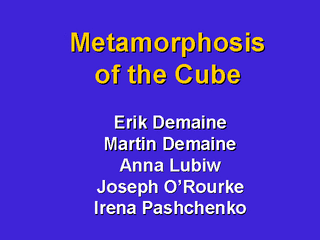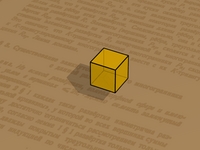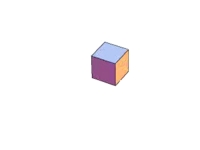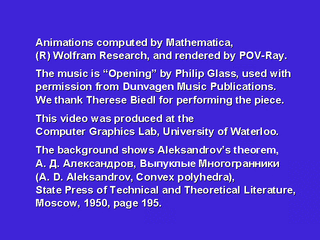


The video is based on our work studying foldings of polygons into convex polyhedra, and the reverse, unfoldings of convex polyhedra into polygons. For more information, see our paper “Enumerating Foldings and Unfolding between Polygons and Polytopes”, the longer technical report “Examples, Counterexamples, and Enumeration Results for Foldings and Unfoldings between Polygons and Polytopes”, and Anna and Joe's original technical report, “When can a polygon fold to a polytope?”.
There are two parts to the video: an animation, and some still frames at the end that briefly describe the video.

|
High-quality XviD AVI POV-Ray with transparency (25 MB) |
Half-resolution MPEG-1 POV-Ray without transparency (8 MB) |
Half-resolution MPEG-1 Original in Mathematica (6 MB) |
|---|---|---|

|

|

|
| The latest, modern rendering, in 640x480. You may need to download the free XviD codec, e.g., Windows binaries. | The version that appeared in the Video Review, in 320x240 with significant compression artifacts. Should play anywhere. | The version submitted to the Video Review, in 320x240 with significant compression artifacts. Should play anywhere. |
Unfortunately, the music is unavailable in this electronic version, because we obtained permission from the copyright holder of the song (Philip Glass's Opening) only for the Video Review.
Out of pedagogical interest, you may find interesting the transformation from the original Mathematica rendering to the ray-traced renderings by POV-Ray. The addition of shadows, self-shadows, background, etc. has a major effect. The final, recent addition is the semitransparency, with the goal of better revealing the 3D structure of the polyhedra (in addition to being "in style" these days).

